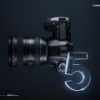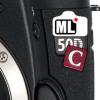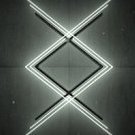Leaderboard
Popular Content
Showing content with the highest reputation on 04/14/2013 in all areas
-
Having researched background information on filming with Four Thirds all over the Internet over the course of the last six months, I found the posts and comments being posted here in the EOSHD forum extremely helpful (as well as - of course - Andrew's genuine articles). They really helped me not only making a choice about the system I want to use / am using now (GH3), but for example also with a view to other equipment. And I am sure that I will find plenty of inspirational posts also in future. So I simply want to say "thank you" to you guys and girls (woman) - I feel that is more than appropriate. :-)3 points
-
Eagerly awaiting your Pocket Cinema Camera? You already have a micro for thirds camera and some C-mount lenses? Want to know if they will cover the sensor of the Pocket? Lets find out! I hope you will add your results, so we can make this list growing. I will only add lenses to the lists when you have proof, in other words: images. How? Because we know the active sensor area of the BMPCC measures 12,48 x 7,02 mm, it is fairly easy to check if our C-mount lenses will cover the full sensor. Calculate this by taking a picture with a lens on your micro four thirds camera, and crop out the image area of theBMPCC. In Photoshop: Open the image. Go to Edit > Image Size, uncheck resample image. Change Image width to 19 centimeters, press ok Go to Image > Canvas Size, change dimensions to 12,48 x 7,02cm, press OK to crop the image to BMPCC size. Resize to 1920x1080 pixels Post your results! Note: If you shoot on the GH3 or other MFT camera's, the sensor size is 17 x 13mm, so change the width in step 3 to 17 cm! To lazy to do it yourself or you can't work it out? Upload the full resolution files and I'll do it. List terms explained: Yes = covers the full sensor of the Blackmagic Pocket Cinema Camera No = doesn't cover the sensor Needs modification = Doesn't fit on C-mount to M43-adapter without modifications Equivalent = The focal length and depth equivalent on a fullframe camera (5D Mark III for example) Blackmagic Pocket Cinema Camera Compatibility list Primes Apollo 25mm f/0.85 - Yes = 72mm f/2.4 equivalent [link to proof] Angenieux 10mm f/1.8 Retrofocus (Fixed Focus) - Yes (dark corners) = 28,8mm f/5.2 equivalent [link to proof] [more info] Carl Zeiss Jena Tevidon 10mm f/2 - Yes - Needs modification = 28,8mm f/5.8 equivalent [link to proof] [more info] Carl Zeiss Jena Tevidon 35mm f/1.9 - Yes - Needs modification = 101mm f/5.6 equivalent [link to proof] Century 9mm f/1.8 - YES (poor quality) [link to proof] Computar 8mm f/1.3 - NO [link to proof] Computar 16mm f/1.4 - NO [link to proof] Computar TV Lens 25mm f/1.8 - YES = 72mm f/5,2 equivalent [link to proof] Cosmicar 8,5mm f/1.5 - NO [link to proof] Cosmicar 12.5mm f/1.8 - YES - Needs modification = 36mm f/5.2 equivalent [link to proof] Cosmicar 25mm f/1.8 - YES - 72mm f/5.2 equivalent [link to proof] Ernitec 6.5mm f/1.8 - YES (heavy distortion) [link to proof] Ernitec/Navitar 17mm f/0.95 - YES (v. blurry corners & distortion) [link to proof] Fujinon TV 12.5mm f/1.4 - Yes (blurry corners) - Mod.? (unknown) = 36mm f/4 equivalent [link to proof] Fujinon TV 16mm f/1.4 - NO [link to proof] Fujinon TV 35mm f/1.7 - YES - Needs modification = 101mm f/4.9 equivalent [link to proof] Leitz Macro Cinegon 10mm f/1.8 - Yes (dark corners) = 28,8mm f/5.2 equivalent [link to proof] Kern Switar 10mm f/1.6 - Yes (slight vignette & blurry corners) [link to proof] Nikon Cine Nikkor 13mm f/1.8 - Yes = 37,5mm f/5.2 [link to proof] Nikon Cine Nikkor 25mm f/1.8 - Yes = 72mm f/5.2 equivalent [link to proof] Pentax 25mm f/1.4 - YES - 72mm f/4 equivalent [link to proof] Schneider 10mm f/1.8 (silver version) - No (almost) [link to proof] Schneider-Kreuznach Cinegon 11.5mm f/1.9 - No (almost) = 33mm f/5.6 equivalent [link to proof] Schneider-Kreuznach Cine-Xenon 16mm f/2 - Yes = 46mm f/5.8 equivalent [link to proof] [link to proof (2)] Schneider-Kreuznach Xenon 25mm f/0.95 - Yes = 72mm f/2.7 equivalent [link to proof] Schneider Xenoplan 17mm f/1.7 - Yes (blurry corners) - [link to proof] SLR Magic 11mm F1.4 - Yes - [link to proof] (added by EOSHD) Tokina TV Lens 8mm f/1.3 - NO [link to proof] Tokina TV Lens 16mm f/1.6 - NO [link to proof] Taylor-Hobson Cooke Kinic 25mm f/1.3 - Yes = 72mm f/3.7 equivalent [link to proof] Taylor-Hobson 25mm f/1.9 - Yes - 72mm f/5.6 equivalent [link to proof] Wesley 25mm f/1.4 - YES = 72mm f/4 equivalent [link to proof] Wollensak Cine Raptar 12.5mm f/1.5 - Yes = 36mm f/4.3 equivalent [link to proof] Wollensak Cine Raptar 25mm f/1.9 - Yes = 72mm f/5.6 equivalent [link to proof] $ 25 noname 25mm f/1.2 CCTV - YES = 72mm f/3.5 equivalent [link to proof] Zooms Ernitec 6-12mm f/1.4 - NO [link to proof] Kowa TV Zoom 12.5-75mm f/1.8 - NO [link to proof]2 points
-
More SLR Magic 12mm/LA7200 quick tests
Tito Ferradans and one other reacted to Zmu for a topic
Finally posted these tests - sunset shots aren't graded CA's haven't been removed I'll post pics of the set up asap need more time in a day : ) https://vimeo.com/639806692 points -
Looking for vintage cine-lens maintenance London (Lomo, Angenieux)
jgharding reacted to Bioskop.Inc for a topic
Looks nice & vintage - its going to be great on the 4k BM! You can get diopters made by Angenieux (i use one with my 54 & its nice - i think 96mm thread) & the last 2 that have popped up on ebay went for between £10-20, but i missed them. As far as repairs go have you tried asking/looking on this forum: http://www.cinematography.com/ They seem nice & helpful - lots of info about all sorts of stuff by professionals & they don't stand for the agro/nonsense that can plague other forums.1 point -
Blackmagic Pocket Cinema Camera c-mount lens compatibility list
Ernesto Mantaras reacted to andy lee for a topic
sharp if you get the right ones I use the Wesley 24mm f1.4 and Pentax 25mm f1.4 on my GH2 and both are razor sharp almost Canon L Series sharp!! superb lenses !1 point -

Affordable 4k monitor - Seiki 50" 3840x2160
KarimNassar reacted to dahlfors for a topic
I just found this: http://www.engadget.com/2013/04/12/seiki-50-inch-4k-1300/ Seiki 50" Class 2160p 120Hz LED HDTV 3840 x 2160, 16:9, 120Hz, 5000:1 Native, 6.5ms, 3x HDMI, VGA (SE50UY04) - A 4k / Ultra HD capable monitor for $1300 USD! Reduser forum discussion: http://www.reduser.net/forum/showthread.php?98027-1299-Seiki-UHDTV-50-quot-SE50UY04-Bought-it-today - One reduser poster says this as well: "I bet that nobody noticed this: it is a 10 bit Color monitor too.. (correct me if I am wrong).." Personal-view about it: http://www.personal-view.com/talks/discussion/6658/1299-uhdtv-seiki-50-se50uy04-/p1 It's going to be interesting to see if someone makes a proper review on this one! Guess affordable 4k is coming sooner than I had expected :)1 point -

Best options for Slow Motions with Panasonic GH3?
Wit reacted to Ben Prater for a topic
Ran into a video recently that said shooting 1080 60p was the way to go slow-mo on the GH3. It means that you can still watch the video and hear audio (which you can't normally do with overcranked footage) -- but also easily slow it down in post because the extra data is there. It's like shooting video RAW on cameras -- you decide on the ISO in post, not on set.1 point -
I have two 12mm already. I don't love the Olympus, but I need it occasionally, because it's my "P"-mode-lens on the GH2 (the automatic mode), i.e. for stabilizer shots. I do love the SLR magic. A lot of slight differences add up to a completely different look, the Oly more videoish, the SLR 'cinematic'. I hope - but can't know yet - that both will be good on the BMPCC. Then you shouldn't buy this camera. I trust my Videospec app (containing Bitrate Pro), which says you can record two hours of ProResHQ on a 128 GB card. Full stop. What wedding ceremony lasts longer? A wide angle allows (i.e. in a room) to show a person from head to feet. This is the basic idea. A 'portrait lens', i.e. an 80 mm, is better for close ups for three reasons: 1. Assumed you don't change your position from the establishing shot, it will allow to now only frame neck and head of the same person. 2. You don't need to move too close, entering the privacy distance (or whatever it is called in english), forcing the person to behave unnatural, to act to the camera. 3. To get the same framing with a wider lens, you'd have to come so close, the person's face would be distorted, making it ugly, comiclike. Watch Men in Black. We see much more wide angle shots today than a few decades before, due to the steadicam. That doesn't contradict the rule that the original purpose of the wide angle is to show a character surrounded by the set (with absolute DoF) and that of a portrait lens to isolate the person (with shallow DoF). As long as a film doesn't have persons as motifs, wide angle lenses produce an artificial feeling of depth through distorting perspectives, something that was considered bad photography once. And I think there is a truth in that. If we have to distort rooms, it must at least be some kind of trip or nightmare. Why I say we can't know about lenses in advance: On the GH2 'worse' lenses look better. All in all, you have comparatively subtle DoF effects. On the 5D, the better the lenses, the better the look. You have DoF effects everywhere, you don't have to worry about it. I shot on 16mm (Bolex), and I don't remember mentionable DoF effects. If something was out of focus, it was annoying ...1 point
-

Blackmagic Pocket Cinema Camera c-mount lens compatibility list
Ernesto Mantaras reacted to iconflyer for a topic
I guess this particular lens would cover the S16 frame because it's designed to project over a 1" sensor which is a little larger. I was looking at the exact same lens as well...1 point -
That top video is the first and only FS700 footage I think I've seen that didn't have almost immediate give-aways that it's digital video. It was just pretty and obviously meticulously shot and crafted. Pretty much all of the other footage I've seen, including some commercials I worked on, had what I'd typically expect from a Sony camera in the highlights. Shooting into the sun is a really good way to bring this out and a BMCC wouldn't look like that. You can shoot into the sun but please don't. FYI, SyFy puts the most awful garbage on air, I wouldn't go bragging about how much they like anything. I mean, gratz on the work but they're not a network of quality and never have been. That said, it's not hard to imagine you or anyone who actually cares about their work could impress them. They keep The Asylum in business, after all.1 point
-
FS700 with a wimpy image? I hardly think so Andrew. You used it for 1 night and you make such a quick judgement without really getting to know the camera? Here's a much more accurate review of the FS700 by Rick Burnet, who has used the FS100 extensive since it was first release and knows more about the FS100 than just about anyone I know of. He knows the FS100 inside and out; and shoots good work with it very regularly. ------------ Rick writes: "Okay, just got done with two full days of shooting the FS700 in the woods. I can say WITHOUT ANY DOUBT that the FS700 colors with the CINE gamma are absolutely better than the FS100 in every way. I am literally blown away with the latitude and highlight handling I am getting. Everything I shot was just spot on for the color I wanted. I left the white balance on 4700K and never needed to change it. One really interesting thing for me is that there is so much detail in the blacks when I am exposing for skin. We had a 5Dm3 with us as well shooting and it was interesting to see how much more latitude we were getting on the FS700. I will say this though, we went from a 7D to 5Dm3 and the difference between both was really easy to see. Th 5Dm3 was holding A LOT more detail. The colors out of it were a more crushed obviously than the FS700. I can't believe I waited so long to get the FS700. Sensitivity does seem to be a bit less than the FS100, but nothing I care about. It's still SO clean. Latitude in the CINE modes is amazing. Wow, there is A LOT of detail in the image. More than I expected. For those with an FS100 that are not terribly happy with the colors, if you love everything else about the FS100 then I can say, it's worth the leap. I don't see that "Sony" look that I've seen on other cameras. My shots are EXTREMELY neutral meaning that the colors look completely natural. (I think I set saturation to -2). I still contend that the FS100 has some heavy sensitivity to red, which is now gone." ------------ Like Rick, I have had a similar experience with the FS700. It has a very nice image, and also, the motion jitter that comes with the FS100 is gone as are sensor reflections. The thing with the FS700 is that it does NOT have a nice pre-graded look unlike the Canons and the BMC which have an excellent stock profile. The FS700 needs to be shot in the Cinegamma profiles, which are excellent, but flat-ish and need grading for every shot. The FS700 stock profiles are horrible and should not be used. If you like to grade, it's a great camera. If you like a nice out of the camera look, it's not the camera for you. Don't believe us? Here's a few videos from the FS700 that really show it's true potential when avoiding the stock profiles https://vimeo.com/63439928 James Vernon says he just shot it with Cinegamma 4 with mostly stock settings and just did a pretty basic grade in After Effects https://vimeo.com/63336544 This was shot with the S#ity Sony Kit lens. Show really how unique a feeling you can elicit from this camera with the slow motion, and unlike the BMC, you can shoot into the sun. https://vimeo.com/58754398 A spot I shot, nothing really fancy, just simple grading https://vimeo.com/48711717 Just some dailies from a music video I shot. Unprocessed footage from the camera. Check out my URL for a quite a bit of FS700 stuff. It's a legit camera for sure. www.builtbyUgene.com I just DP'd 3 spots for the SyFy Channel (Major cable channel in the USA) and the client loved the FS700 footage. I've shot stuff for other channels like Bravo as well, and every time the clients love the footage they are getting There's so much good stuff shot with the FS700. The biggest downfall of the FS700 is that it is associated with the FS100 which has a pretty bad aesthetic IMO - weird colors, bad highlights, strange motion, clinical and sterile looking. The FS700 fixes all that and you would know that if you spend more than a few hours with it. For me, I couldn't even care less about 4K RAW. RAW is such a huge workflow killer. Great in theory, but in reality, dealing with it in post is expensive and time consuming just because of the gigantic storage space. The internal codec isn't super great, but it's pretty good, certainly as good as the GH3 and you can't stop raving about how great that camera is. Before you proclaim a camera as great or a total failure, you should spend some real time with it. You shot with the FS700 briefly and proclaimed it a failure. You haven't even shot with the BMC 4K, yet judging by all the coverage you give the camera, you've already deemed it a success and are hyping the hell out of it before anything is really even know about it. All I'm saying is spend real quality time with the equipment if you are going to write about it.1 point
-

BMPC 4K greenscreen "should" be keyable?
HurtinMinorKey reacted to mtheory for a topic
Correct, I meant to say "optical distortion" instead of "optical image" in that sentence. Those 4 center squares at the bottom are the sweet spot with least distortion, so an S35 will naturally take advantage of that. Question is, will it make much difference visually? Only the eye will tell, I have an old Canon 20D lying around with a 1.6x factor, will have to make my own test sometime.1 point -

BMPC 4K greenscreen "should" be keyable?
HurtinMinorKey reacted to Sean Cunningham for a topic
The optical image won't be the same because the distance necessary to achieve the same framing between Full-Frame and S35 will be different. The S35 result will match the 7D reference you're looking for. The actual optical image of the lens is the same regardless of sensor. Distortion is related to what part of the "optical image" can be seen and the distance from subject you have to be to achieve the framing of a sensor/film that's 36mm wide. Faces are distorted by your own eye as you get closer to them. How is a lens not going to do the same thing? The theory behind portrait lenses and their reduced distortion have to do with how they render facial features in accordance with how our own eye-to-brain interface handles facial recognition. These lenses simulate how we see faces at the optimal distance for recognition (~15' I think it might be?) At 50mm her nose is still quite pronounced, this lens rendering depth compression close to how our eyes see. By 100mm she's starting to look like a model/actress and not just a semi-cute girl passed in the mall. You want to know why some pretty girls could never be models or you see some candid photo taken of a working, high paid model and wonder "WTF?" it largely has to do with how that person looks with appropriate lenses and nothing to do with how they look in real life or standing right next to them. @50mm she's not even the same girl as at @100mm, if you didn't know her personally or had familiarity overriding what the image is telling you about her features. It should come as no surprise 135mm is where she looks best and this is a classic, go-to focal length for portrait photography. This minor amount of distortion would be the same with a 50mm at a similar distance but now no longer framed for close-up.1 point -
@Rungunshoot Before buying any of those (around $500 price range), I'd rather wait 'til they are produced by SLR magic or others (or abuse some of the cheaper or older lenses Andy listed). I expect the BM Pocket to be a bestseller, it will push MFT tremendously and people will demand wide angle lenses. Panasonic and the other MFT sellers say 'thanks BM'! Until then, there are two existing MFT lenses that allow a run&gun style (equaling 36mm, the classic reporter's focus length) and are fast enough to provide some shallow DoF, this is the SLR magic 12mm (originally an observation lens as well) and the Olympus 12mm (with the automatic functions working, I am curious to see the auto exposure work with the 13 stops and high iso). As for a standard lens, why not the Lumix pancake 14mm that's seen on the camera on the BM site? (EDIT: I know 50 mm is considered standard, but that's valid only for a 3:2 aspect ratio, it would be 47 mm for 16:9, 42 mm is a good compromise. You wouldn't shoot portrait close ups with it, but as far as portrait lenses are concerned, there are of course hundreds of options for MFT.) With the BM cameras, we will see another game changing. It will no longer be about 'as shallow a DoF as possible'. There is nothing special about that any more. It will start to be about image quality. We are not yet fully aware of the avalanche that has been triggered. Ordinary hobbyists will buy the BM Pocket for under $1000 (in Germany, you can order it for 894,88 €, that's almost 200 € less than the GH3, body only). They will be able, at least, to use Resolve lite 10 for free, which has more editing features than #9 and works platform independant (a very shy love relationship between BM and Apple has to be acknowledged though). They will be told that RAW as well as ProRes 422 10-bit provide better quality than their pathetic '16,7 million colors' display can handle. They will be convinced by the industry that their old displays don't suffice anymore. They will buy 10-bit monitors (a few years ago 5-10.000 bucks, now starting at ~500, allegedly Dell has some good and affordable models. BTW: This is a serious limitation for all iMac users. Their displays are 8-bit. Probably there is/will be a solution from BM, I don't know, BM says 'thank you Apple'). They will learn to see the higher quality (frankly, it's easier to see than the difference between, say, 720p and 1080p). This is what I call a change. EDIT: We can only speculate which lenses will be best for the Pocket. Sensor size, lens characteristics, post-debayering, we simply can't tell how these things influence each other. I really think it's wise to start with the most basic pancake and then collect experiences.1 point
-

Blackmagic Pocket Cinema Camera S16 Crop Factor & Choosing Lens
P337 reacted to Rungunshoot for a topic
I don't think anything is going to give you that look on the BMPCC. I've been researching the same thing, and the focal length of lens you're seeking is 8mm. While those lenses exist for s16mm, they would need impossibly large apertures to equal the wide-yet-shallow DOF in your sample images. You might get something vaguely similar with this combo: m43 speed booster (doesn't exist yet) voigtlander 17.5mm f/.95 That would something be like a 35mm f/1.4 on full-frame. As far as I know, nothing is equally fast and wide in the m43 arena.1 point -
I bought myself a new V1 based on this this thread. After a few days I decided to keep it, not for its 4K raw capability, which is too limiting to be practical in my mind, but for its burst shooting capability as a street camera. At 10fps, I can keep shooting stills for 3.4 seconds, long enough to capture an interesting scene, and fast enough not to miss the critical moment. I shot 1800 pictures in a couple of hours, and the battery still showed as full. I was able to pick many keepers out of this session, improving my success rate by many folds. Moreover, it's completely silent, and the AF is always spot on. For this purpose, it's quite a unique camera, even better than the like of 1Dx or D1s. I'm happy that I stumbled on this gem.1 point
-

Digital S16 marketing, Black Magic vs. Digital Bolex
mjones41 reacted to Andrew Reid for a topic
It's as if not even Vincent LaForet could hype the Digital Bolex back into contention :) I don't think it is as clear cut as 'they are dead'. The Ikonoskop has a lovely image and similar sensor, global shutter, yet Digital Bolex have undercut that with half the price. The Pocket Cinema Camera is amazing but doesn't have the features or global shutter of the Bolex - likely it may not have the image quality either. Certainly anamorphic on the Bolex is a tasty idea for me. The Bolex will have more resolution and likely better colour. I've seen the images that CCD sensor is capable of and they don't disappoint. So let's not write it off. $3200 is not a lot of money compared to a 5D Mark III considering you're getting 13 stops DR, global shutter and raw. They will deliver the camera, they are a small team. Look how at Red's initial ONE and Scarlet delays. They still haven't done anything remotely close to the Bolex for $3000 yet.1 point -
LOL @Pkent: It's the older Angenieux 20-120 T3. It's a wonderful look from what I've seen so far, very 70s (this lens is from 1972). I've not had a chance to shoot much, I still need to properly rig it. And rig it you must! Heavy does not even come close to describing it :o 4.5KG! My word. You just never assume anything can be so dense, it feels like part of a f***ing tank! Or a piece of dark matter. So yeah, not for run and gun! But can't wait to let it loose on the BMD 4K on the next big film.1 point



